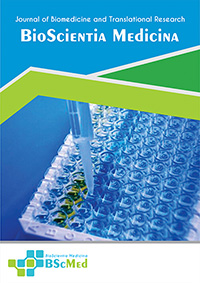Main Article Content
Abstract
Background: Rabies, a viral zoonosis caused by Lyssavirus, remains a significant public health threat, particularly in Asia and Africa, with an almost invariably fatal outcome once clinical symptoms manifest. While dogs are the primary vector, transmission via cats, especially through scratches, is an under-recognized risk in endemic areas like Indonesia. Delayed post-exposure prophylaxis (PEP) and gaps in surveillance contribute to ongoing fatalities.
Case presentation: We report the case of a 45-year-old Indonesian male from a rural, rabies-endemic area in Jembrana Regency, Bali, who developed fatal encephalitis. Approximately one month prior to symptom onset, he sustained a superficial scratch on his right hand from a free-roaming domestic cat. He did not seek immediate medical attention or PEP. His illness commenced with prodromal symptoms of fever and headache, rapidly progressing to agitation, dysphagia, severe hydrophobia, and aerophobia. Neurological examination revealed fluctuating consciousness, hyperactive reflexes, and marked autonomic dysfunction. Despite intensive supportive care in an isolation unit, his condition deteriorated, leading to death two days after admission. A clinical diagnosis of rabies encephalitis was made based on the characteristic symptoms, a clear history of exposure to a potential vector, and the epidemiological context.
Conclusion: This case underscores the critical importance of recognizing cats as significant vectors for rabies transmission, even via non-bite exposures like scratches, particularly in endemic settings. It highlights the urgent need for increased public awareness regarding prompt wound management and PEP for all potential rabies exposures, including those from felines. Furthermore, comprehensive rabies control strategies must incorporate feline vaccination and improved surveillance to effectively mitigate this fatal disease in regions like Indonesia.
Keywords
Article Details
As our aim is to disseminate original research article, hence the publishing right is a necessary one. The publishing right is needed in order to reach the agreement between the author and publisher. As the journal is fully open access, the authors will sign an exclusive license agreement.
The authors have the right to:
- Share their article in the same ways permitted to third parties under the relevant user license.
- Retain copyright, patent, trademark and other intellectual property rights including research data.
- Proper attribution and credit for the published work.
For the open access article, the publisher is granted to the following right.
- The non-exclusive right to publish the article and grant right to others.
- For the published article, the publisher applied for the Creative Commons Attribution-NonCommercial-ShareAlike 4.0 International License.





